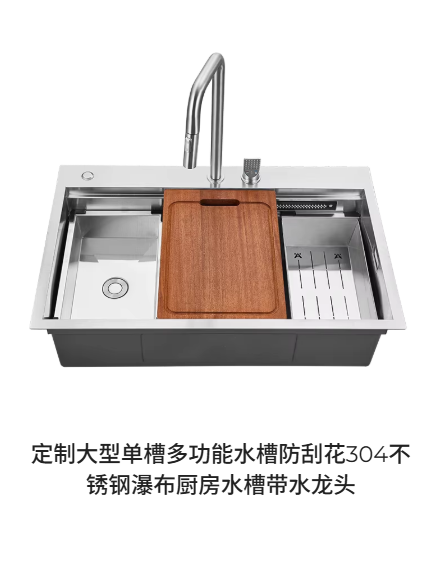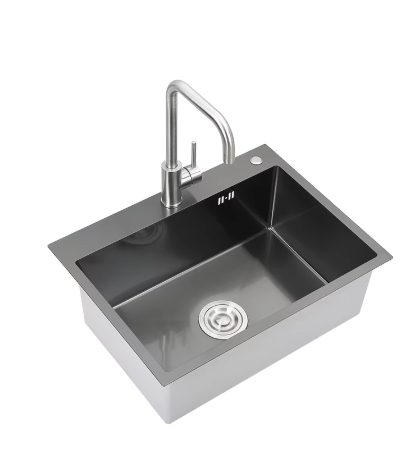Essential Guide to Commercial Kitchen Sink Selection
Selecting the right commercial sink for your kitchen is a critical decision that impacts daily operations, efficiency, and food safety compliance. Whether you're outfitting a restaurant kitchen, industrial cafeteria, or commercial food preparation facility, your commercial sink serves as the cornerstone of kitchen functionality. This comprehensive guide will walk you through everything you need to know about choosing the perfect commercial sink that meets your specific requirements and industry standards.

Understanding Commercial Sink Materials
Stainless Steel Excellence
Stainless steel remains the gold standard for commercial sinks, offering unmatched durability and hygiene benefits. The most common grade used in commercial applications is 304 stainless steel, known for its excellent corrosion resistance and sturdy construction. Higher-end facilities might opt for 316 grade stainless steel, which provides enhanced protection against harsh chemicals and salt exposure. The gauge of the steel also matters - typically ranging from 14 to 16 gauge for commercial sinks, with lower numbers indicating thicker, more durable material.
Alternative Material Options
While stainless steel dominates the commercial sink market, other materials deserve consideration for specific applications. Composite granite sinks offer exceptional heat resistance and can withstand heavy impact, making them suitable for certain specialized kitchen areas. Fiberglass and acrylic options provide cost-effective solutions for lighter-duty applications, though they may not meet all health code requirements for primary food preparation areas.
Configuration and Size Considerations
Compartment Layout Options
Commercial sinks typically come in one, two, three, or four-compartment configurations. The three-compartment design is particularly popular as it accommodates the wash, rinse, and sanitize stages required by most health codes. When selecting compartment configuration, consider your specific washing needs, available space, and local health department requirements. Each compartment should be deep enough to submerge your largest pieces of equipment while allowing comfortable access for staff.
Space Planning and Measurements
Accurate measurement of your available space is crucial when selecting a commercial sink. Consider not only the physical dimensions of the sink but also requirements for drainboards, dish tables, and workflow areas. Standard commercial sink bowls typically range from 16 to 24 inches in depth, with widths varying from 18 to 30 inches per compartment. Remember to account for plumbing connections and ensure adequate clearance for maintenance access.
Essential Features and Accessories
Drainboard Integration
Drainboards are vital components that extend the functionality of your commercial sink. These sloped surfaces provide space for dishes to air dry and help manage water runoff efficiently. Consider whether you need left, right, or dual drainboards based on your kitchen layout and workflow patterns. Some models offer customizable drainboard lengths to perfectly fit your space requirements.
Faucet and Spray Options
The right faucet configuration can significantly impact sink efficiency. Pre-rinse units with high-pressure spray nozzles are essential for removing food debris, while standard faucets with temperature control provide necessary water flow for general tasks. Consider models with built-in soap dispensers and architectural-grade construction to ensure longevity in high-use environments.
Installation and Maintenance Requirements
Professional Installation Considerations
Proper installation of a commercial sink requires careful planning and often professional expertise. Consider factors such as water supply lines, drainage systems, and local building codes. The floor must be able to support the sink's weight when filled, and proper ventilation should be maintained to prevent moisture-related issues. Many manufacturers recommend professional installation to ensure warranty coverage and optimal performance.
Ongoing Maintenance Protocols
Regular maintenance extends the life of your commercial sink and ensures continued compliance with health regulations. Develop a cleaning schedule that includes daily sanitization, weekly deep cleaning, and monthly inspection of all components. Pay special attention to seals, joints, and drainage systems to prevent bacterial growth and ensure proper functionality.
Regulatory Compliance and Safety Standards
Health Department Requirements
Commercial sinks must meet specific health department regulations regarding material composition, size, and configuration. NSF certification is often required for food service applications, ensuring the sink meets strict safety and sanitation standards. Familiarize yourself with local health codes and ensure your chosen sink meets or exceeds all applicable requirements.
Workplace Safety Considerations
Ergonomic design features can help prevent workplace injuries and improve staff efficiency. Consider sink height, reach distances, and the integration of anti-fatigue mats in your planning. Some commercial sinks offer adjustable legs for perfect height positioning, while others include features like rounded corners to prevent injury during cleaning.
Frequently Asked Questions
What size commercial sink do I need for my kitchen?
The size of your commercial sink depends on several factors, including kitchen space, volume of dishes, largest equipment to be washed, and local health codes. A general rule is to ensure each compartment can fully submerge your largest cookware while maintaining comfortable working height for staff. Most commercial kitchens require sinks with compartments at least 16 inches deep and 18 inches wide.
How do I maintain the finish of my stainless steel commercial sink?
To maintain your stainless steel commercial sink, clean daily with mild soap and warm water, avoid abrasive cleaners, and dry thoroughly to prevent water spots. Use stainless steel cleaner periodically to maintain shine, and always clean in the direction of the grain. Prevent chemical damage by avoiding prolonged contact with bleach or other harsh cleaning agents.
What should I consider when choosing sink accessories?
When selecting accessories for your commercial sink, consider your specific operational needs. Essential accessories might include pre-rinse units, drain boards, waste disposals, and chemical dispensing systems. Ensure all accessories meet health code requirements and are compatible with your chosen sink model. Consider future needs and choose a sink that can accommodate additional accessories as your business grows.



